The Gift of South Dakota
Subscriptions to South Dakota Magazine make great gifts!
Subscribe today — 1 year (6 issues) is just $29!
Rockin' the Spearfish Pavilion
Editor’s Note: This story is revised from the July/August 2002 issue of South Dakota Magazine. To order a copy or to subscribe, call 800-456-5117.
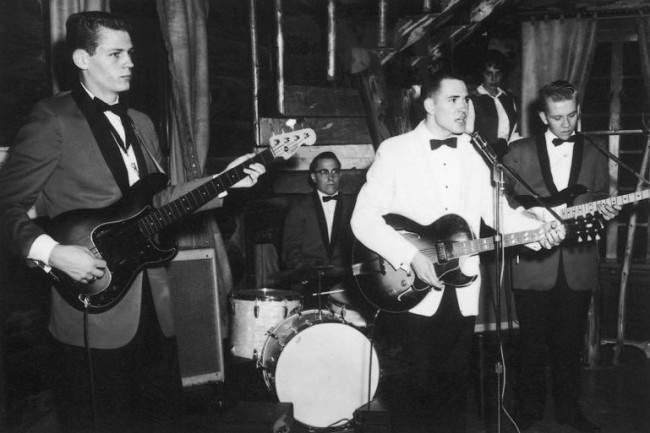 |
| Spearfish singer Larry Bell and the Continentals played the Pavilion before finding success in Denver. |
Early rock ‘n’ roll “was a whole new thing,” said Gary Mule Deer. “It was about being defiant, and of course parents hated it."
Growing up in Spearfish, Mule Deer experienced big-name recording stars up close and loud, and they changed him forever. From about 1957 until 1964, Friday night meant rock ‘n’ roll dances in the city park Pavilion, dances that drew prime acts: the Everly Brothers, Jerry Lee Lewis, Chubby Checker, Buddy Holly’s Crickets, the Ronettes, Seals and Croft and the Ventures.
When Waylon Jennings died, he was recalled almost exclusively as a country act. But there are those in Spearfish who remember him coming to town as part of the Crickets. Glen Campbell became a country icon, but first he rocked the Pavilion as part of the Champs, who hit number one in the national pop charts with “Tequila,” and who also claimed Seals and Croft as members.
“I never could dance, but I sat on the rail listening to some of the most remarkable performers of the time,” said Larry Bell. “And I talked with any of them who would take the time, because they were living the life I wanted. Conway Twitty had a big, big rock ‘n’ roll hit, ‘It’s Only Make Believe,’ and I asked him one night at the Pavilion about the pop music business. He was frank, told me it was full of people who’d screw you any way they could, so he was getting out and going country, which is exactly what he did.” Indeed, Twitty went on to record more than 50 number one country hits.
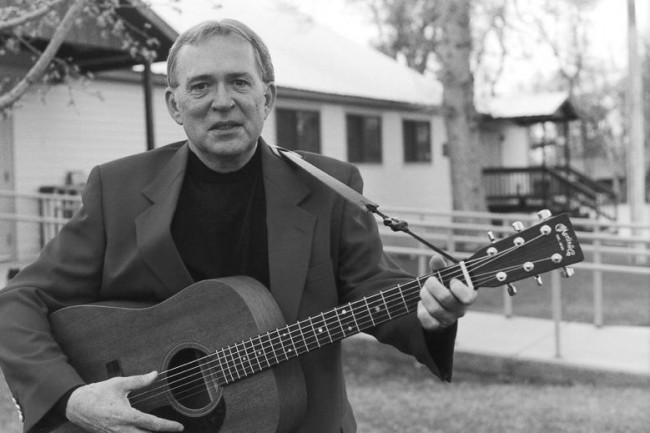 |
| Spearfish’s Larry Bell in 2002, years after his musical debut at the Pavilion. |
Bell never learned to dance, but he did form a rock ‘n’ roll act similar to that of his Pavilion idols, despite Twitty’s warning. Larry Bell and the Continentals played the Pavilion, and later went on to considerable success as a Denver band. Bell also worked on the road for the Everly Brothers, who told him they remembered their Spearfish gigs.
“It seemed like they all remembered Spearfish,” said Mule Deer, whose own Los Angeles-based music career often reunited him with Pavilion performers. “That’s because they’d try to get into town a day early to see Mount Rushmore, and the Black Hills made Spearfish memorable.”
Of course, the musicians themselves made Fridays memorable for their fans. Mule Deer has never forgotten Jerry Lee Lewis playing Spearfish as “Whole Lotta Shakin’ Goin’ On” dominated the airwaves. Mule Deer and a friend sat outside the Pavilion listening to that song on the radio, then turned the radio off to listen to Lewis playing it live.
Spearfish fans stood respectfully still for the Ventures’ instrumental numbers, and Jerry Lee Lewis said he envied that. But Spearfish responded to Lewis’s music by dancing with all the energy it could muster.
Jerry Sternad of Spearfish booked the rock ‘n’ roll acts. The American Legion post, which was the responsible for the Pavilion and needed to make money there, contracted with him. “How did he do it? I don’t know,” marveled Bell. “But Sternad got people right at the peak of their careers.”
Performers arrived by car — typically “two Cadillacs and a U-Haul,” Mule Deer said. Fans drove in too, from all over the Black Hills and beyond, probably 1,000 to 1,500 on good nights, and maybe 2,000 for the biggest acts. Admission was a couple bucks, but not everyone tried to get in the wood-frame Pavilion. Big screened windows made the music audible for blocks, and lots of couples preferred staying in their parked cars and…well, listening.
It’s hard to beat the creekside city park’s summertime ambiance, with the piney scent of Spearfish Canyon on the wind; it’s those kinds of nights most often recalled decades later. But there were dances in the dead of winter, too. “It took a long time to heat that big building up,” Mule Deer said, “But eventually all the bodies would do it.”
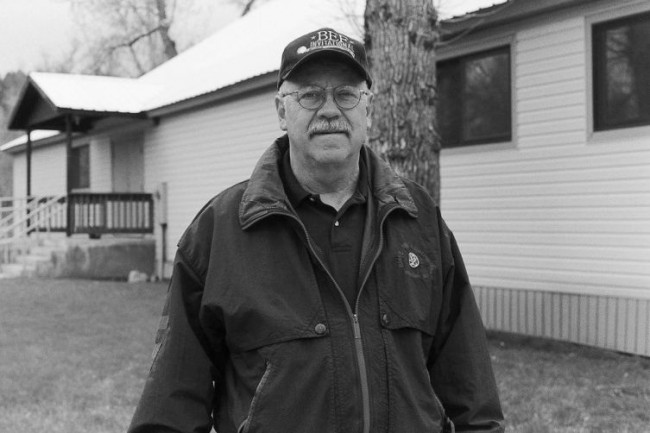 |
| Spearfish musician and teacher Lyle Berry played with a Black Hills group called Lyle, Doug and Paul. |
Things sometimes heated up in other ways too, recalled Lyle Berry. He moved to Spearfish as a high school sophomore in 1956. While rock ‘n’ roll hits of years ago are often presented today as tame souvenirs of a more innocent time, in fact there was nothing intended to be tame or innocent about them. “Those dances were known as the place to go to get close to trouble,” Berry recalled. “They weren’t for young kids. Mostly it was a crowd already out of high school.”
There was always a supply of liquor in the parked cars, and Spearfish boys thought of the events as prime opportunities for meeting out-of-town girls. Not infrequently those girls came to Spearfish with possessive boyfriends. Booze and jealousy combined to trigger some nasty fights, a few of which are remembered even now in details which elicit winces. Quick fights of passion usually happened in the Pavilion parking lot. Big ones involving pairs of expert fighters or long scores to settle were moved a couple miles out of town, away from police interruption, after the music.
Berry, who went on to teach high school 31 years in Spearfish and Lead, marveled at how different life was for Black Hills kids then.
“I didn’t have much money, and neither did anyone else I knew,” he said. “It cost just a few dollars to get into the Pavilion, but you’d have to watch your money during the week to make sure you had enough on Friday. Of course, it was the only place to see that kind of entertainment, so it was really something to look forward to.”
Berry was yet another Pavilion kid who grew up to perform both solo and duet acts in Black Hills bars and supper clubs of the 1970s, and as part of a group called Lyle, Doug and Paul. Seeing one of his peers, Larry Bell, succeed on the Pavilion stage made it seem possible Lyle could play, too.
"Those dances were known as the place to go to get close to trouble."
Friday night dances at the Pavilion, built in the 1920s, were popular long before rock ‘n’ roll. Buddy Meredith and his KOTA Cowboys played there, as did nationally-known and local big bands. Wilber Tretheway from Lead, who later would be credited with saving the Pavilion, led a much-loved big band. Another Lead man, Henry Phillips, brought the Henry Phillips and the Ambassadors band to the Pavilion regularly for ten years in the 1940s and 1950s.
Bob Phillips sometimes carried his father’s drums in and out of the building. “Spearfish really turned out for dad’s dances,” Bob said, just as it did for rock ‘n’ roll. Cowboy and big band dances continued after rock ‘n’ roll continued to share the spotlight.
Just as Spearfish appreciated local country and big band groups, it got behind rock ‘n’ rollers with local or regional connections. Both Mule Deer and Bell said Myron Lee and the Caddies of Sioux Falls were hugely popular in Spearfish. “Myron Lee was a great saxophone man,” Bell said. “At least in our area, he really introduced the sax.”
Like Bell, Mule Deer eventually made it onto the Pavilion stage. “I mentioned how the musicians remembered Spearfish because of the Black Hills,” he said with a grin. “Well, maybe they also remembered because there was always a kid bugging them to sing with them. Me.”
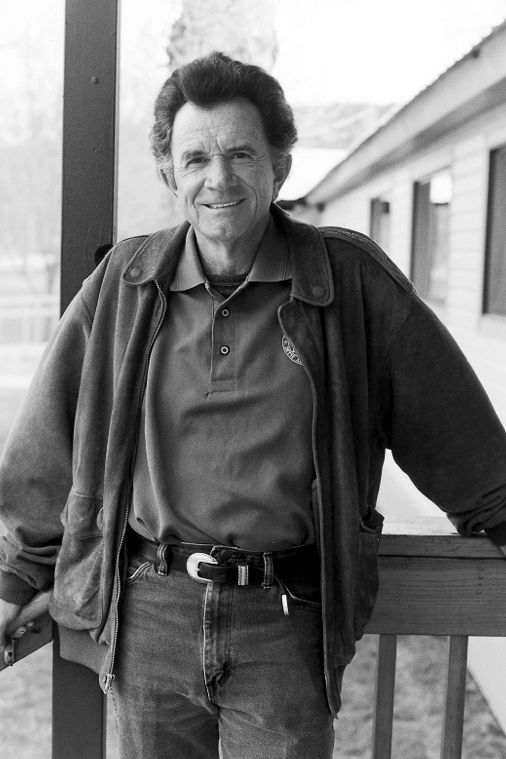 |
| After a Los Angeles music career, Gary Mule Deer once again lives in Spearfish, home of the hall of his youthful dreams. |
The kid had talent. He learned guitar by picking his way through Johnny Cash and Crickets numbers. One night after Buddy Holly had died in an Iowa plane crash, the Crickets called Mule Deer up to perform “Summertime Blues “ and “Mule Skinner Blues” with them. Mule Deer became friends with the Crickets and the Everly Brothers, both of whom played Spearfish often. He also formed a bond with the Ventures, partly because he ran Spearfish’s Vita movie theater.
“My dad bought the Vita and had me running it in 1963,” Mule Deer said. “The Ventures loved movies, so after their Pavilion shows I’d run a special showing of whatever we had playing, just for them. I’d pay the projectionist a little extra, and we’d even have concessions. It became a Spearfish ritual for them.”
Mule Deer’s rock ‘n’ roll friends encouraged him to polish his music, and before long, he had his own band, the Vaqueros, opening Pavilion shows. By 1965, Mule Deer’s career made Los Angeles his official residence, although more nights than not he was on the road. From time to time Mule Deer crossed paths with Pavilion alumni. When he and Jerry Lee Lewis played Lake Tahoe, Lewis began calling him “Spearfish” in honor of that association. The Ventures, never forgetting the movies and popcorn, set Mule Deer and his California band up with a line of guitars.
Back in Spearfish, the Pavilion turned quiet. After the Beatles toured America in 1964 and 1965, promoters saw the biggest rock ‘n’ roll acts had potential for filling not just dance halls, but arenas and stadiums. Spearfish dances got smaller and smaller, and more modern venues took shape in the area. Within a few years, the Pavilion was more likely to host a Boy Scout jamboree on a Friday night than big-name entertainment.
By the mid-1980s the building had fallen into disrepair, and might have been lost, except that former big band leader Wilbur Tretheway had moved to town and become mayor. He dubbed himself “the begging mayor” because he was prepared to plead for labor and materials to save the building. He succeeded, and today the Pavilion, more sturdy and comfortable than ever, bears the late Tretheway’s name.
No historical marker relates the fact that rock ‘n’ roll Hall of Famers once strutted across the tiny stage. Gary Mule Deer, Larry Bell and Lyle Berry — the Spearfish kids who found rock ‘n’ roll life more than a fleeting fantasy — all live in Spearfish again, though Mule Deer is proof you need to be careful what you wish for. The guy who wanted to travel still spends many nights on the road performing.
But for a few weeks each year he’s home in the Hills, close to the big white building where so much began.


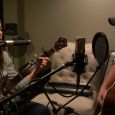
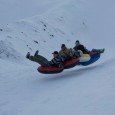
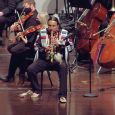

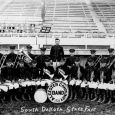
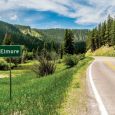


Comments
vg
Mary Temple
Spearfish
I recall going to the Pavilion a few times during my time at BHSC.
To see some of the bands that were touring the country during those years.